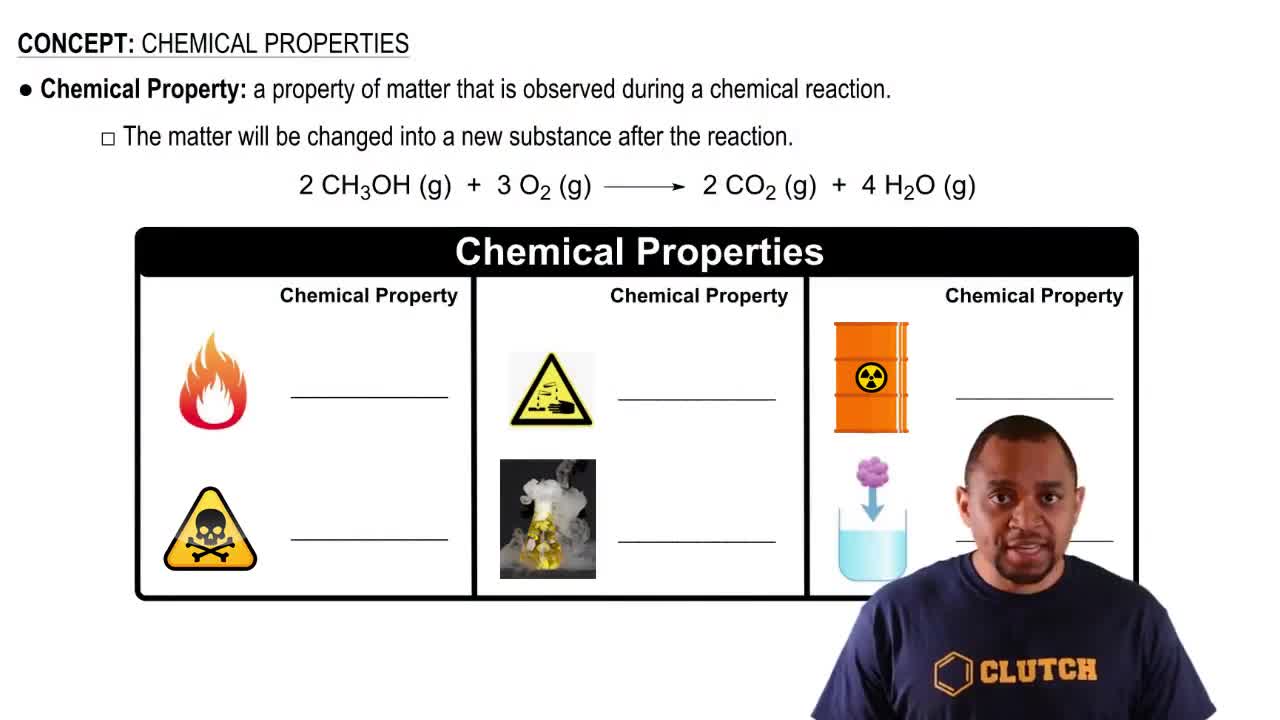Use the activity series of metals (Table 4.5) to predict the outcome of each of the following reactions. If no reaction occurs, write NR. (d)
Ch.4 - Reactions in Aqueous Solution
Chapter 4, Problem 122b
(b) Which of the following reactions would you expect to occur according to the activity series you established in part (a)?

Verified Solution
Video duration:
2mWas this helpful?
Key Concepts
Here are the essential concepts you must grasp in order to answer the question correctly.
Activity Series
The activity series is a list of metals ranked by their reactivity, with the most reactive metals at the top and the least reactive at the bottom. This series helps predict whether a metal will displace another in a chemical reaction. For example, a metal higher in the series can displace a metal lower in the series from its compound.
Recommended video:
Guided course

Activity Series Chart
Displacement Reactions
Displacement reactions occur when one element replaces another in a compound. In the context of metals, a more reactive metal can displace a less reactive metal from its salt solution. Understanding this concept is crucial for predicting the outcomes of reactions based on the activity series.
Recommended video:
Guided course

Single Displacement Reactions
Chemical Reactivity
Chemical reactivity refers to the tendency of a substance to undergo a chemical reaction, either by itself or with other materials. Factors influencing reactivity include atomic structure, electronegativity, and ionization energy. In the context of the activity series, the reactivity of metals determines their ability to participate in displacement reactions.
Recommended video:
Guided course

Chemical Properties
Related Practice
Textbook Question
495
views
Textbook Question
Neither strontium (Sr) nor antimony (Sb) is shown in the activity series of Table 4.5. Based on their positions in the periodic table, which would you expect to be the better reducing agent? Will the following reaction occur? Explain.
319
views
Textbook Question
(a) Use the following reactions to arrange the elements A, B, C, and D in order of their decreasing ability as reducing agents:
313
views
Textbook Question
(a) Use the following reactions to arrange the elements A, B, C, and D in order of their decreasing ability as reducing agents:
429
views
Textbook Question
(b) Which of the following reactions would you expect to occur according to the activity series you established in part (a)?
319
views
Textbook Question
Iodine, I2, reacts with aqueous thiosulfate ion in neutral solution according to the balanced equation
How many grams of I2 are present in a solution if 35.20 mL of 0.150 M Na2S2O3 solution is needed to titrate the I2 solution?
513
views
